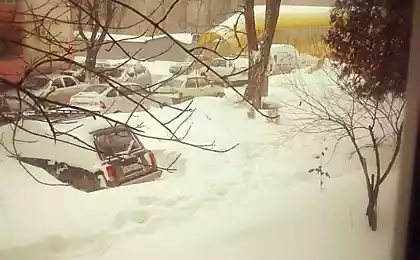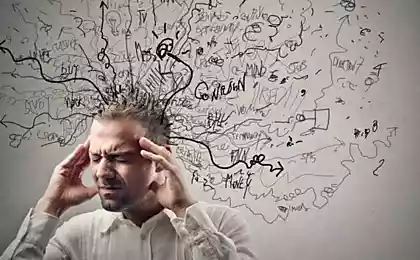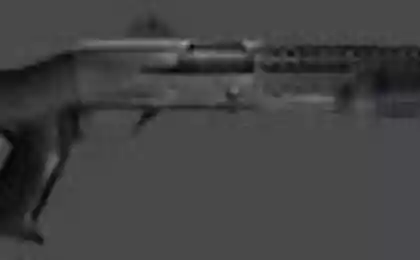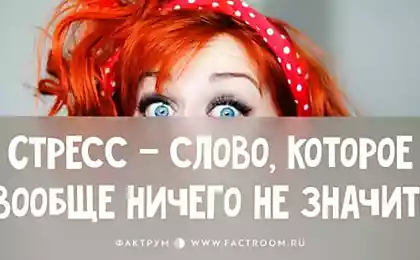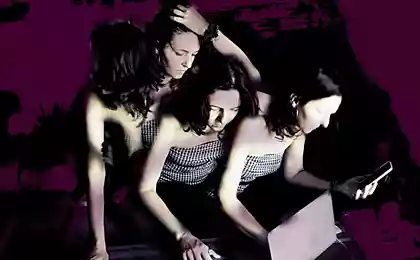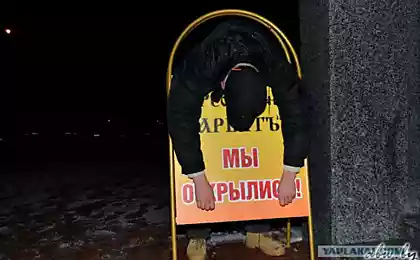484
Tool for finding harmony
What is the therapeutic meaning of fencing? What it means to be a partner on the "same wavelength", in the same rhythm? Specially for the readers of econet.ru says Andrew Sigutin, psychologist, teacher, trainer Therapeutic meaning of fencing (TSF)
Rhythm is the basis of everything
Everything has a rhythm, and so out of rhythm is not leaking and none of the vital process. This suggests that rhythm is one of the fundamental principles of life: it is present in animate and inanimate nature, — anywhere and everywhere we can hear and see. Rhythm reflects the connection of nature, human and his activities with the universe. Rhythm is a form only.
In Greek "rhythm" means "dimensionality" is a uniform alternation, repetition of any elements. Also distinguish between the camera (we'll come back to him) and tempo (slow, moderate and fast) – this is the rate of change of rhythm.

In therapeutic meaning and are lived fencing considering concepts such as consistency and integrity. What is co-creation through the prism of rhythm? It means to be a partner on the "same wavelength", in the same rhythm.
Moreover, the rhythm describes the relationship of man with his environment and with himself (this is particularly evident in the therapeutic encounter). Is only excessively speed up your rhythm of life, once lost contact not only with his environment but also himself. And then lost consciousness.
No joint activity is impossible without joint space and universal time (rhythm), because otherwise all actions of the members of the team will be rassoglasovaniya. Moreover, each person has its individual rhythm, "I", which is important to be able to combine with the joint rhythm of "We" (the collective or society). For example, the same restlessness and the hurry habit often indicate that the man lives not in his rhythm.
Rhythm is the strongest expressive means. For example, a smooth rhythm gives the music a lyricism, and intermittent – creates a sense of anxiety, tension, excitement.
Rhythmic structure of a musical work forms a sequence of durations of sounds and pauses. By the way, the pause is also music, it is definitely worth a listen. Music without rhythm is perceived as a collection of sounds. There is such a phenomenon: if a musician, singer or dancer does not fall into the rhythm, then the listener (the audience) a feeling of discomfort, hypocrisy.
Rhythm, affecting the person on a reflex level, able to cause him a reaction. And any response – it is the dialogue, communication with the outside world. Rhythm allows you to describe and explain various life phenomena and cultural phenomena.
The rhythm in terhechte
However, the musical understanding of rhythm and tempo is not really suitable for therapeutic meaning of fencing (TSF). Although, of course, and not contrary to it. For practice terhechte more appropriate understanding of tempo and rhythm, which was adopted in stage art, in the system of Stanislavsky.
According to the actor the systemtemp – it's the degree of speed of the executable actions. And the pace of the action (slow, moderate, fast) do not always have a significant effect on the internal state of a person. External mechanical acceleration doesn't always equate to a feeling of inner activity.
Other business — rhythm behavior, i.e. the intensity of the action and of human experience, inner emotional intensity. Besides, the concept of "rhythm" includes the rhythm: a particular regularity of action, its organization in time and space.
If, for example, while dancing with the swords, we see the uniform by a smooth alternation of tension and weakening, effort and rest, of movement and stops, you can argue that people moving rhythmically. That is the concept of rhythm and determines the dynamic nature of the action, its external and internal image.
So, the "rhythm" implies both intensity, and measured actions. Note: if the same pace of interaction, each of the participants can be quite different internal rhythms. For example, fencers, one of which the coach and the other a beginner, the duel fast enough fence. The pace of both is almost the same, but the rhythms are different: the newcomer it is more stressful and intense.
The camera in action
The pace and rhythm concepts are interrelated, therefore he had United them together, using the term "tempo-rhythm". They are often in direct dependence from each other: active the rhythm speeds up the process of implementation of the action and, conversely, reduced the rhythm carries it off.
But sometimes direct contradiction between them. For example, you can quickly swing the sword and to lead a quiet conversation with your partner. By the way, the slow pace may be caused by various reasons: either an extreme internal tension or a state of mental peace and every time you will create a special rhythm of behavior.
Every life situation has a corresponding tempo. It is not surprising that in the stage functions the better part of creating the right moods and emotions. A distinction is made between individual and collective tempo (internal and external). By the way, the rhythm of the body is movement and the pace of the event – psychological atmosphere.
Besides, the camera detects not only the psychological atmosphere of the action, but the speed stay time. The concept of duration of time is directly related to our inner rhythm. For example, for a child a day seemed not to end. However, in adulthood the feeling of time changing, and it seems that the duration of the day everything is reduced and reduced.
In the therapeutic encounter it is possible to distinguish between internal and external temporitme as each of the partners, and in General their "body interaction". Repeatedly from people who has watched their therapeutic encounters in the video, had to hear similar feedback: inside the fight it seemed that all happens very quickly, but in reality, candid camera has captured a relatively low rate of fencing.
Taking into account the terminology of the Stanislavsky can say that during a fight people have an intense inner rhythm at a moderate pace of interaction. Tervehditty these concepts give a solid understanding of the events. That is, the rhythm is an internal state, and the rate – external speed.
To live in his rhythm
Rhythm means the emotional impact and appeals to the feelings and moods of people. Generally remoteapi is one of the areas of psychotherapy, allowing to find a balance between the mind and the senses. Rhythm regulates not only the auditory and visual perception, but also develops coordination, helps to align the breathing. Despite the fact that the sense of rhythm is innate, it is possible to develop, for example, through dance with swords, combining their movement with a variety of rhythm. Thus it is necessary to learn each rhythm and keep his mood.
Again,remoteapi based on the fact that our emotions are connected with a particular tempo. People regularly experiencing different emotions, and everyone needs some kind of a set of emotions.
Any emotion is manifested through the body: muscle tension, clamps and relaxation. In principle, a variety of rhythms, movements, dances, fights these emotions, we are working on. Rhythmic movements with the sword – pereproshivka short items of the senses, we create different emotional state...
People need different rhythms, and required a certain balance of emotional States. Every emotion, every state is bound to a particular tempo. Therefore, when working with the client, remoteapi tries to hold it in different rhythms and tempo.
Usually start with the rhythm in which man is at the moment and is configured to start from that rhythm and a little bit to speed it up or slow it down. It all depends on the goals and objectives. Gradually in the classroom find a personal rhythm appropriate to our life-form. The main thing – to live in the correct rhythm for yourself.
Thanks to the rhythm, produced by internal discipline, the ability to navigate in space, it develops coordination. The rhythm necessary for a person in the same way as strength, speed, endurance. At the rhythm of a person is most successfully doing the work, so in the end, more fully carried out.
Fencing remoteapi
In the classroom, "rhythmic" terpentol we are trying gradually to undergo, to live their different rhythms and pace, that is, learning to consciously manage your tempo, to read, emotional state.
For example, we have developed exercises aimed at making people feel and realize your own individual tempo and played it (with two hands, tapping the rhythm with swords (Bekenov) that can remind you to play the drums). First, a person is looking for, as if groping your pace: try to knock shorter, longer, faster, slower, until you feel that he is in this rhythm comfortably ("it's mine").
As it turned out from the experience person to do this seemingly simple exercise is quite difficult. You will need some internal "metronome", not allowing to break out of its set speed, imposing on him an individual rhythmic pattern.
It is noticed that many people have a tendency to inadequate acceleration of the rhythm, so they need to pay special attention to the retention of the original tempo. "Downed" inner rhythm are often a symptom of any psychological trauma, anxiety, lack of psychological stability. For example, there is scientific evidence that people who suffer logoneurosis, disturbed sense of rhythm.
When the man felt and voiced your I-rhythm, the next step is to visualize it, to see it firsthand, to better understand. To do this, we ask the partner to dance with swords under it, this kind of "accompaniment" to another through the movement reflected the essence of the proposed I-rhythm. This exercise promotes the development of empathy, self-knowledge, and other. Be yourself also means to live in his rhythm.
It has been observed that if a person during this exercise, I managed to find your authentic self-the rhythm, it brings joy. And not only the one who taps it. And the dancing, and the surrounding, as a result, produces a strong positive charge.
We have developed and other exercises, the purpose of which I find his life rhythm in order to harmonize it with the rhythm of the partner during a fight (for the development of Jointness). The ability to attune with Others is very important to many people, as modern society is very divided.
First, tapping barename each other, people looking for a rhythm, which he wants to live, then match finds the rhythm, which wants to communicate with another partner at the time of fencing.
By the way, to match the rhythm of each "poedinok" to some extent, can be identified by the sound of swords. Then each of the partners tries to reconcile his individual I-beat to the rhythm of the other, to find a joint We-rhythm and remain in it.
This skill of feeling people helps to build a harmonious relationship, not only in combat, but in the family and in professional activities. One girl involved in our Club, is intuitively came to the conclusion that when dealing need to hear at what rate the interlocutor says, and align your rhythm with the speed of his speech. And because its activity is related to sales in person, this method helped her to improve the effectiveness of their work.

Tool for finding harmony
Working with rhythm in terhechte is an effective tool for the harmonization of the emotional state. Some psychologists, like Stanislavsky, allocate internal and external temporitme.
Let me explain with an example. Suppose a man is late for the last train. Of course, to do this, he has to go very quickly and sometimes even run. Usually together with the external acceleration of the person accelerates and the inner tempo, he begins inwardly to hurry/
And then, finally, having the train and sat down on the seat, often people can not internal to stop. Inside he continues to run and nervous. This is because the world has changed, and the man of inertia is moving in the last question.
So remoteremote trying to teach people to keep calm and steady, like the beat of a metronome, internal tempo, even if the person runs or late for something. This lack of internal stress allows a person in a stressful situation to act more appropriately and expediently. Simply put, one learns to move quickly (to fit in an external rhythm) and do not experience the inner haste. In other words, to be in a state of quiet presence.
That is why modern man is so important to find and live in the correct rhythm for yourself. Any expression of anger and anger is always associated with an increase in emotional level, and hence the tempo. It is audible even to accelerate the rate of speech the angry man: knock knock... toktokuchuk, that is, the acceleration occurs by the end of the phrase. When a person realizes that, it becomes easier to control yourself.
I once witnessed a woman in anger, yelled at his child. If we abstract from the meaning of its phrase, then clearly could hear the increasing pace and knocks the rhythm of her utterances: TA-TA-Tata... it was so obvious that it could even burn the hands. That is what I noticed women...
Moreover, in the classroom I asked her to squeal with swords its individual "I"-rhythm. As a result, again highlighted this tattered rhythmic pattern with acceleration towards the end. It was obvious to all present. We noticed women on this feature, saying that life in this final climactic phase of it, usually emotionally breaks down on aggression, and asked her to correct your "I's"-rhythm, so it was no obvious peak of the bursts.
Gradually the woman managed to find her steady rhythm, which she loved. As a result, she had insight to the fact strong that she even walked to the corner of the room, to be alone with his new harmonious rhythm. Her eyes were shining with happiness... She realized that if life is going to adhere to this harmonious rhythm, then bring it out yourself would be virtually impossible. Thus, if in stressful situations person "to include" balancing the rhythm of it, it will help him to keep his composure.
Rhythm can be watched and philosophically: as a dynamic state of Being. For example, it is possible to distinguish Female rhythm Mens rhythm, the rhythm of the Child and so on. The training also learn to find for each tervehtia concepts (Presence, Consistency, Integrity, Implementation) your rhythm and live it. In short, the possibility of using rhythm in therapeutic meaning of fencing, virtually limitless.
Author: Andrey Sigutin, psychologist, teacher, trainer Therapeutic meaning of fencing (TSF), tailored for
P. S. And remember, just changing your mind — together we change the world! ©
Source: Andrew Sigutin
Rhythm is the basis of everything
Everything has a rhythm, and so out of rhythm is not leaking and none of the vital process. This suggests that rhythm is one of the fundamental principles of life: it is present in animate and inanimate nature, — anywhere and everywhere we can hear and see. Rhythm reflects the connection of nature, human and his activities with the universe. Rhythm is a form only.
In Greek "rhythm" means "dimensionality" is a uniform alternation, repetition of any elements. Also distinguish between the camera (we'll come back to him) and tempo (slow, moderate and fast) – this is the rate of change of rhythm.

In therapeutic meaning and are lived fencing considering concepts such as consistency and integrity. What is co-creation through the prism of rhythm? It means to be a partner on the "same wavelength", in the same rhythm.
Moreover, the rhythm describes the relationship of man with his environment and with himself (this is particularly evident in the therapeutic encounter). Is only excessively speed up your rhythm of life, once lost contact not only with his environment but also himself. And then lost consciousness.
No joint activity is impossible without joint space and universal time (rhythm), because otherwise all actions of the members of the team will be rassoglasovaniya. Moreover, each person has its individual rhythm, "I", which is important to be able to combine with the joint rhythm of "We" (the collective or society). For example, the same restlessness and the hurry habit often indicate that the man lives not in his rhythm.
Rhythm is the strongest expressive means. For example, a smooth rhythm gives the music a lyricism, and intermittent – creates a sense of anxiety, tension, excitement.
Rhythmic structure of a musical work forms a sequence of durations of sounds and pauses. By the way, the pause is also music, it is definitely worth a listen. Music without rhythm is perceived as a collection of sounds. There is such a phenomenon: if a musician, singer or dancer does not fall into the rhythm, then the listener (the audience) a feeling of discomfort, hypocrisy.
Rhythm, affecting the person on a reflex level, able to cause him a reaction. And any response – it is the dialogue, communication with the outside world. Rhythm allows you to describe and explain various life phenomena and cultural phenomena.
The rhythm in terhechte
However, the musical understanding of rhythm and tempo is not really suitable for therapeutic meaning of fencing (TSF). Although, of course, and not contrary to it. For practice terhechte more appropriate understanding of tempo and rhythm, which was adopted in stage art, in the system of Stanislavsky.
According to the actor the systemtemp – it's the degree of speed of the executable actions. And the pace of the action (slow, moderate, fast) do not always have a significant effect on the internal state of a person. External mechanical acceleration doesn't always equate to a feeling of inner activity.
Other business — rhythm behavior, i.e. the intensity of the action and of human experience, inner emotional intensity. Besides, the concept of "rhythm" includes the rhythm: a particular regularity of action, its organization in time and space.
If, for example, while dancing with the swords, we see the uniform by a smooth alternation of tension and weakening, effort and rest, of movement and stops, you can argue that people moving rhythmically. That is the concept of rhythm and determines the dynamic nature of the action, its external and internal image.
So, the "rhythm" implies both intensity, and measured actions. Note: if the same pace of interaction, each of the participants can be quite different internal rhythms. For example, fencers, one of which the coach and the other a beginner, the duel fast enough fence. The pace of both is almost the same, but the rhythms are different: the newcomer it is more stressful and intense.
The camera in action
The pace and rhythm concepts are interrelated, therefore he had United them together, using the term "tempo-rhythm". They are often in direct dependence from each other: active the rhythm speeds up the process of implementation of the action and, conversely, reduced the rhythm carries it off.
But sometimes direct contradiction between them. For example, you can quickly swing the sword and to lead a quiet conversation with your partner. By the way, the slow pace may be caused by various reasons: either an extreme internal tension or a state of mental peace and every time you will create a special rhythm of behavior.
Every life situation has a corresponding tempo. It is not surprising that in the stage functions the better part of creating the right moods and emotions. A distinction is made between individual and collective tempo (internal and external). By the way, the rhythm of the body is movement and the pace of the event – psychological atmosphere.
Besides, the camera detects not only the psychological atmosphere of the action, but the speed stay time. The concept of duration of time is directly related to our inner rhythm. For example, for a child a day seemed not to end. However, in adulthood the feeling of time changing, and it seems that the duration of the day everything is reduced and reduced.
In the therapeutic encounter it is possible to distinguish between internal and external temporitme as each of the partners, and in General their "body interaction". Repeatedly from people who has watched their therapeutic encounters in the video, had to hear similar feedback: inside the fight it seemed that all happens very quickly, but in reality, candid camera has captured a relatively low rate of fencing.
Taking into account the terminology of the Stanislavsky can say that during a fight people have an intense inner rhythm at a moderate pace of interaction. Tervehditty these concepts give a solid understanding of the events. That is, the rhythm is an internal state, and the rate – external speed.
To live in his rhythm
Rhythm means the emotional impact and appeals to the feelings and moods of people. Generally remoteapi is one of the areas of psychotherapy, allowing to find a balance between the mind and the senses. Rhythm regulates not only the auditory and visual perception, but also develops coordination, helps to align the breathing. Despite the fact that the sense of rhythm is innate, it is possible to develop, for example, through dance with swords, combining their movement with a variety of rhythm. Thus it is necessary to learn each rhythm and keep his mood.
Again,remoteapi based on the fact that our emotions are connected with a particular tempo. People regularly experiencing different emotions, and everyone needs some kind of a set of emotions.
Any emotion is manifested through the body: muscle tension, clamps and relaxation. In principle, a variety of rhythms, movements, dances, fights these emotions, we are working on. Rhythmic movements with the sword – pereproshivka short items of the senses, we create different emotional state...
People need different rhythms, and required a certain balance of emotional States. Every emotion, every state is bound to a particular tempo. Therefore, when working with the client, remoteapi tries to hold it in different rhythms and tempo.
Usually start with the rhythm in which man is at the moment and is configured to start from that rhythm and a little bit to speed it up or slow it down. It all depends on the goals and objectives. Gradually in the classroom find a personal rhythm appropriate to our life-form. The main thing – to live in the correct rhythm for yourself.
Thanks to the rhythm, produced by internal discipline, the ability to navigate in space, it develops coordination. The rhythm necessary for a person in the same way as strength, speed, endurance. At the rhythm of a person is most successfully doing the work, so in the end, more fully carried out.
Fencing remoteapi
In the classroom, "rhythmic" terpentol we are trying gradually to undergo, to live their different rhythms and pace, that is, learning to consciously manage your tempo, to read, emotional state.
For example, we have developed exercises aimed at making people feel and realize your own individual tempo and played it (with two hands, tapping the rhythm with swords (Bekenov) that can remind you to play the drums). First, a person is looking for, as if groping your pace: try to knock shorter, longer, faster, slower, until you feel that he is in this rhythm comfortably ("it's mine").
As it turned out from the experience person to do this seemingly simple exercise is quite difficult. You will need some internal "metronome", not allowing to break out of its set speed, imposing on him an individual rhythmic pattern.
It is noticed that many people have a tendency to inadequate acceleration of the rhythm, so they need to pay special attention to the retention of the original tempo. "Downed" inner rhythm are often a symptom of any psychological trauma, anxiety, lack of psychological stability. For example, there is scientific evidence that people who suffer logoneurosis, disturbed sense of rhythm.
When the man felt and voiced your I-rhythm, the next step is to visualize it, to see it firsthand, to better understand. To do this, we ask the partner to dance with swords under it, this kind of "accompaniment" to another through the movement reflected the essence of the proposed I-rhythm. This exercise promotes the development of empathy, self-knowledge, and other. Be yourself also means to live in his rhythm.
It has been observed that if a person during this exercise, I managed to find your authentic self-the rhythm, it brings joy. And not only the one who taps it. And the dancing, and the surrounding, as a result, produces a strong positive charge.
We have developed and other exercises, the purpose of which I find his life rhythm in order to harmonize it with the rhythm of the partner during a fight (for the development of Jointness). The ability to attune with Others is very important to many people, as modern society is very divided.
First, tapping barename each other, people looking for a rhythm, which he wants to live, then match finds the rhythm, which wants to communicate with another partner at the time of fencing.
By the way, to match the rhythm of each "poedinok" to some extent, can be identified by the sound of swords. Then each of the partners tries to reconcile his individual I-beat to the rhythm of the other, to find a joint We-rhythm and remain in it.
This skill of feeling people helps to build a harmonious relationship, not only in combat, but in the family and in professional activities. One girl involved in our Club, is intuitively came to the conclusion that when dealing need to hear at what rate the interlocutor says, and align your rhythm with the speed of his speech. And because its activity is related to sales in person, this method helped her to improve the effectiveness of their work.

Tool for finding harmony
Working with rhythm in terhechte is an effective tool for the harmonization of the emotional state. Some psychologists, like Stanislavsky, allocate internal and external temporitme.
Let me explain with an example. Suppose a man is late for the last train. Of course, to do this, he has to go very quickly and sometimes even run. Usually together with the external acceleration of the person accelerates and the inner tempo, he begins inwardly to hurry/
And then, finally, having the train and sat down on the seat, often people can not internal to stop. Inside he continues to run and nervous. This is because the world has changed, and the man of inertia is moving in the last question.
So remoteremote trying to teach people to keep calm and steady, like the beat of a metronome, internal tempo, even if the person runs or late for something. This lack of internal stress allows a person in a stressful situation to act more appropriately and expediently. Simply put, one learns to move quickly (to fit in an external rhythm) and do not experience the inner haste. In other words, to be in a state of quiet presence.
That is why modern man is so important to find and live in the correct rhythm for yourself. Any expression of anger and anger is always associated with an increase in emotional level, and hence the tempo. It is audible even to accelerate the rate of speech the angry man: knock knock... toktokuchuk, that is, the acceleration occurs by the end of the phrase. When a person realizes that, it becomes easier to control yourself.
I once witnessed a woman in anger, yelled at his child. If we abstract from the meaning of its phrase, then clearly could hear the increasing pace and knocks the rhythm of her utterances: TA-TA-Tata... it was so obvious that it could even burn the hands. That is what I noticed women...
Moreover, in the classroom I asked her to squeal with swords its individual "I"-rhythm. As a result, again highlighted this tattered rhythmic pattern with acceleration towards the end. It was obvious to all present. We noticed women on this feature, saying that life in this final climactic phase of it, usually emotionally breaks down on aggression, and asked her to correct your "I's"-rhythm, so it was no obvious peak of the bursts.
Gradually the woman managed to find her steady rhythm, which she loved. As a result, she had insight to the fact strong that she even walked to the corner of the room, to be alone with his new harmonious rhythm. Her eyes were shining with happiness... She realized that if life is going to adhere to this harmonious rhythm, then bring it out yourself would be virtually impossible. Thus, if in stressful situations person "to include" balancing the rhythm of it, it will help him to keep his composure.
Rhythm can be watched and philosophically: as a dynamic state of Being. For example, it is possible to distinguish Female rhythm Mens rhythm, the rhythm of the Child and so on. The training also learn to find for each tervehtia concepts (Presence, Consistency, Integrity, Implementation) your rhythm and live it. In short, the possibility of using rhythm in therapeutic meaning of fencing, virtually limitless.
Author: Andrey Sigutin, psychologist, teacher, trainer Therapeutic meaning of fencing (TSF), tailored for
P. S. And remember, just changing your mind — together we change the world! ©
Source: Andrew Sigutin
How to keep perfect figure after the birth of five children: the secret 34-year-old British women
Catecar has brought to Geneva its vision of the environmentally friendly car
